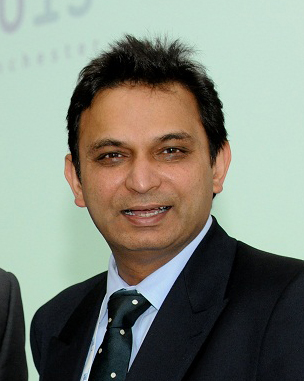This article needs additional citations for verification .(September 2023) |
Robotics in Italy is a high technology area where Italy hosts numerous research centers.
This article needs additional citations for verification .(September 2023) |
Robotics in Italy is a high technology area where Italy hosts numerous research centers.
The origins of this technology in Italy, but also in the world, which requires knowledge of many sciences to be applied, beginning in the Italian Renaissance with the studies of Leonardo da Vinci.
The first project documented of a robot, in particular of an android, is signed by Leonardo da Vinci in the 1495.



Almost all the Italian regions are equipped with robots in the operating room and about 18 thousand robotic surgery operations were carried out in 2017. [1]
"The da Vinci robotic surgery - explains Walter Artibani, Director of the UO of Urology of the Integrated AOU of Verona and Secretary General of the Italian Society of Urology - is emblematic of minimally invasive surgery.
The robot allows a precision not comparable with other techniques and allows to overcome the limits linked to the difficulty of treating pathologies in difficult-to-reach anatomical sites with laparoscopy Italian urology is an excellence in the field of robotics.
In urology the reasons for success are many and simple: the precision of the robot allows greater ease of access to more complex anatomies, a demolithic and reconstructive precision, less blood loss, a reduction in post-operative hospitalization and a reduction in side effects. (erectile dysfunction and incontinence). Added to this are characteristics such as immersive three-dimensional vision able to multiply up to 10 times the normal vision of the human eye.
The Italian Institute of Technology of Genoa started in December 2013 a research program called Robot Rehab that focuses on robotic rehabilitation by developing exoskeletons for the disabled, prosthetic devices and new rehabilitation instruments.
This program is part of an important agreement with INAIL to provide potential applications in the Italian national health system in the short term. [2]
The Plantoid is a machine or a synthetic organism designed to behave, act and grow like a plant. The concept was published for the first time in 2010. A prototype for the European Space Agency is now under development. One of the first prototypes was realized by the Micro-Biorobotics Center of the Italian Institute of Technology in Pontedera in 2015. [3]
The Robot R1, the humanoid robot built by Italian Institute of Technology in Genoa.
Sunday, October 14, 2018 at 10, at the start of the "StraGenova del cuore", the non-competitive race dedicated to the memory of the 43 victims of the collapse of Ponte Morandi, there will also be R1, the humanoid robot built by Italian Institute of Technology, in the special role of mascot which will have the task of symbolically giving the start to the race. [4]
The first experiment in the world, took place in Italy, in 2014 to have installed the bionic hand that perceives the touch was a Danish 36-year-old Dennis Aabo Sørensen. [5]
The bionic hand called LifeHand2 works with a sensitivity similar to the natural one: it is the first time that an artificial limb allows the wearer to perceive and recognize the objects he touches. The result, published in the journal Science Traslational Medicine, is an Italian research project and has origin from a vast international collaboration, coordinated by Silvestro Micera, of the Polytechnic of Lausanne.
The project was developed largely in Italy, by the BioRobotics Institute of the Sant'Anna School of Advanced Studies in Pisa, in collaboration with the German University of Fribourg.
A woman is the first Italian cyborg woman who has been implanted the bionic hand that perceives the contact with objects, made by the group of Silvestro Micera, the Scuola Superiore Sant'Anna and the Polytechnic of Lausanne. The intervention was performed in June 2016 at the Policlinico Gemelli in Rome by the group of neurologist Paolo Maria Rossini. In the experiment, which lasted six months, the bionic hand was implanted to Mrs. Almerina Mascarello, who lives in Veneto and who had lost her left hand in an accident. [6]
An android is a humanoid robot or other artificial being often made from a flesh-like material. Historically, androids were completely within the domain of science fiction and frequently seen in film and television, but advances in robot technology now allow the design of functional and realistic humanoid robots.

Kevin Warwick is an English engineer and Deputy Vice-Chancellor (Research) at Coventry University. He is known for his studies on direct interfaces between computer systems and the human nervous system, and has also done research concerning robotics.

The Six Million Dollar Man is an American science fiction and action television series, running from 1973 to 1978, about a former astronaut, USAF Colonel Steve Austin, portrayed by Lee Majors. After a NASA test flight accident, Austin is rebuilt with bionic implants which give him superhuman strength, speed and vision. Austin is then employed as a secret agent by a fictional U.S. government office titled OSI. The series was based on Martin Caidin's 1972 novel Cyborg, which was the working title of the series during pre-production.

In medicine, a prosthesis, or a prosthetic implant, is an artificial device that replaces a missing body part, which may be lost through trauma, disease, or a condition present at birth. Prostheses are intended to restore the normal functions of the missing body part. Amputee rehabilitation is primarily coordinated by a physiatrist as part of an inter-disciplinary team consisting of physiatrists, prosthetists, nurses, physical therapists, and occupational therapists. Prostheses can be created by hand or with computer-aided design (CAD), a software interface that helps creators design and analyze the creation with computer-generated 2-D and 3-D graphics as well as analysis and optimization tools.
Remote surgery is the ability for a doctor to perform surgery on a patient even though they are not physically in the same location. It is a form of telepresence. A robot surgical system generally consists of one or more arms, a master controller (console), and a sensory system giving feedback to the user. Remote surgery combines elements of robotics, telecommunications such as high-speed data connections and elements of management information systems. While the field of robotic surgery is fairly well established, most of these robots are controlled by surgeons at the location of the surgery. Remote surgery is remote work for surgeons, where the physical distance between the surgeon and the patient is less relevant. It promises to allow the expertise of specialized surgeons to be available to patients worldwide, without the need for patients to travel beyond their local hospital.

Bionics or biologically inspired engineering is the application of biological methods and systems found in nature to the study and design engineering systems and modern technology.
Biorobotics is an interdisciplinary science that combines the fields of biomedical engineering, cybernetics, and robotics to develop new technologies that integrate biology with mechanical systems to develop more efficient communication, alter genetic information, and create machines that imitate biological systems.

Robot-assisted surgery or robotic surgery are any types of surgical procedures that are performed using robotic systems. Robotically assisted surgery was developed to try to overcome the limitations of pre-existing minimally-invasive surgical procedures and to enhance the capabilities of surgeons performing open surgery.
The Sant'Anna School of Advanced Studies is a special-statute, highly selective public research university located in Pisa, Italy.
Body hacking is the application of the hacker ethic in pursuit of enhancement or change to the body's functions through technological means, such as do-it-yourself cybernetic devices or by introducing biochemicals.

The history of robots has its origins in the ancient world. During the industrial revolution, humans developed the structural engineering capability to control electricity so that machines could be powered with small motors. In the early 20th century, the notion of a humanoid machine was developed.

Robotics is the branch of technology that deals with the design, construction, operation, structural disposition, manufacture and application of robots. Robotics is related to the sciences of electronics, engineering, mechanics, and software.

The Istituto Italiano di Tecnologia (IIT) (in English: Italian Institute of Technology) is a scientific research centre based in Genoa (Italy, EU). Its main goal is the advancement of science, in Italy and worldwide, through projects and discoveries oriented to applications and technology. Some account IIT as the best Italian scientific research centre.

A cyborg —a portmanteau of cybernetic and organism—is a being with both organic and biomechatronic body parts. The term was coined in 1960 by Manfred Clynes and Nathan S. Kline.
The following outline is provided as an overview of and topical guide to robotics:
Polo Sant'Anna Valdera (PSAV) is a research centre of Sant'Anna School of Advanced Studies in Pisa based in Pontedera (Pisa). It was inaugurated in 2002 thanks to the interest of the then president of Piaggio Giovanni Alberto Agnelli. The property is housed in converted sheds donated by Piaggio.

Michael D. Stifelman Michael D. Stifelman, M.D., is Chair of Urology at Hackensack University Medical Center, Director of Robotic Surgery at Hackensack Meridian Health, and Professor and Inaugural Chair of Urology at Hackensack Meridian School of Medicine.

Prokar Dasgupta is an Indian-born British surgeon and academic who is professor of surgery at the surgical academy at King's Health Partners, London, UK. Since 2002, he has been consultant urologist to Guy's Hospital, and in 2009 became the first professor of robotic surgery and urology at King's, and subsequently the chairman of the King's College-Vattikuti Institute of Robotic Surgery.

Alois Christian Knoll is German computer scientist and professor at the TUM School of Computation, Information and Technology at the Technical University of Munich (TUM). He is head of the Chair of Robotics, Artificial Intelligence and Embedded Systems.
Álvaro Ríos Poveda is a Colombian electronic engineer, university professor, and researcher who specializes in biomedical engineering and mechatronics. He has performed research on myoelectric prostheses, sensory feedback, and bionic vision technologies.